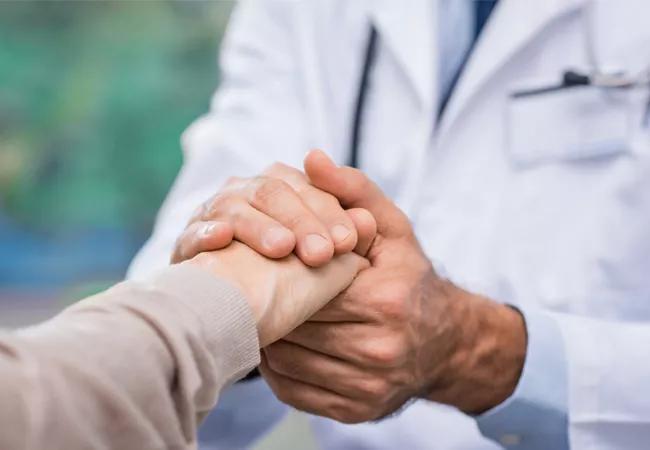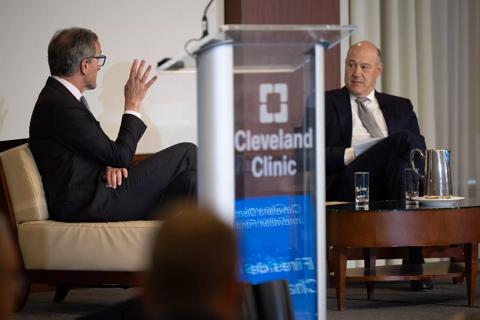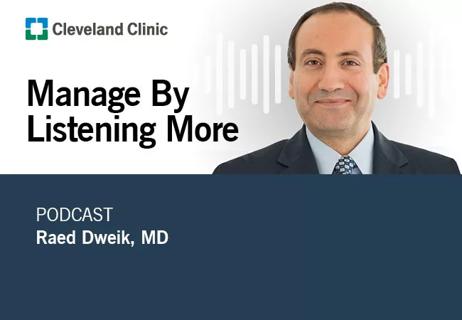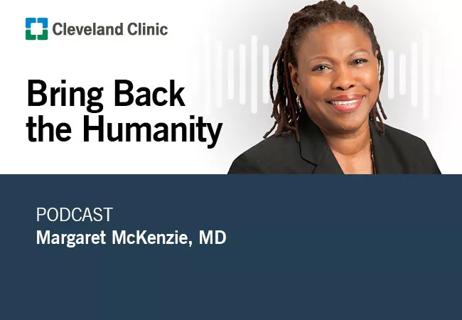Advertisement
A trait that elevates physicians in the eyes of patients and colleagues

What qualities make a good doctor? Medical schools tend to favor students who score high in biology, chemistry or other science, demonstrate leadership and are driven to succeed. Curiosity, doggedness, a keen memory and the ability to think deductively are also highly valued.
Advertisement
Cleveland Clinic is a non-profit academic medical center. Advertising on our site helps support our mission. We do not endorse non-Cleveland Clinic products or services. Policy
What about empathy? Research has shown empathy in physicians is associated with kindness and a good bedside manner. Empathy also correlates with satisfying personal growth, decreased burnout, increased patient satisfaction and lower rates of being sued. Empathetic medical students appear to be more competent and are likely to receive greater recognition for their achievements.
With so many positive associations, empathy should be as highly valued as other traits. At Cleveland Clinic Lerner College of Medicine (CCLCM), it is. Empathy has been part of their curriculum since the medical school opened in 2002.
“Empathy is not an option: It is at the core of what we do, which is why we embrace it,” says Leonard H. Calabrese, DO, who teaches empathy in The Art and Practice of Medicine to third-year students at CCLCM.
Empathy can be explained in various ways. A common interpretation is the ability to feel how another person feels.
Empathy has many definitions, which vary depending on whether it is considered primarily a cognitive or affective trait and whether it includes a component of helping a person in need.
“For our course work at CCLCM, we use the construct that defines empathy as a cognitive—rather than emotional—attribute that enables someone to understand the expectations, concerns and perspective of a patient,” says Dr. Calabrese. “Importantly, it includes the capacity to communicate this back to the patient. The intention to help is implicit.”
When the CCLCM tapped Dr. Calabrese to teach a course then titled Human Values, empathy was deemed important to include. However, it was not a subject he had the confidence to teach. He set about immersing himself in the medical literature for an on-the-job education.
Through his search and appraisal of the literature, he quickly identified Mohammedreza Hojat, PhD, as a leading researcher in field of empathy in medicine. A professor at the Sidney Kimmel Medical College of Thomas Jefferson University in Philadelphia, Dr. Hojat developed the Jefferson Scale of Empathy (JSE), a 20-question instrument for measuring empathy in the context of patient care. The JSE has been translated into more than 50 languages and used as the basis for hundreds of studies.
“I was fascinated by his work and thought the logical starting point was to meet him,” says Dr. Calabrese.
He invited Dr. Hojat to Cleveland Clinic. The two men quickly developed a close friendship and have been collaborating on studies ever since.
Advertisement
Dr. Calabrese’s interest in teaching empathy to medical students attracted the attention of the American Association of Colleges of Osteopathic Medicine (AACOM), which decided to explore how empathy was being taught to DO medical students nationwide. They turned to Dr. Calabrese for help, and he recruited Dr. Hojat. The resulting Project in Osteopathic Medical Education and Empathy (POMEE) is a groundbreaking, nationwide, multi-institutional study in medical education sponsored by AACOM in collaboration with the American Osteopathic Association, Cleveland Clinic and Sidney Kimmel Medical College at Jefferson.
POMEE collected data on nearly 10,000 students from all 41 DO medical colleges in the United States. These data have served as a rich resource for many studies undertaken by Drs. Calabrese and Hojat.
One recently published study in Academic Medicine explored whether empathy declines during medical education in DO- and MD-granting schools. Previously, a significant decline in empathy scores was documented in year three, when students move from preclinical to clinical phases. This study suggested that osteopathic medical students underwent a lesser decline in empathy than previously described in MD students.
Drs. Calabrese and Hojat began searching for reasons that might explain this observation, in hopes of finding lessons that could apply to the broader world of empathy in health care.
“Higher scores on the JSE throughout medical school among DO students appear to be associated with their belief in the osteopathic philosophy of integrative care,” Dr. Calabrese explains.
He interprets these findings as support for the notion that illness does not belong solely to the body or to the mind, but rather to the individual as a whole—a philosophy espoused by Eric Cassell in The Nature of Healing. “I keep a copy of this book on my desk. It guides my personal philosophy of patient care and my goals in teaching the Art and Practice of Medicine course,” he explains.
Another study looked at associations between empathy in patient care and gender, age, race, ethnicity, academic background and career interest in U.S. medical students.
As in previous studies, empathy was found to be more prevalent in women than men and in students with undergraduate majors in Social and Behavioral Sciences and Arts and Humanities.
But high empathy scores in underrepresented African-American and Hispanic medical student groups stood out.
“Perhaps these students are taking on the role of the ‘wounded healer:’ They know about suffering and have a better view of the common experience,” Dr. Calabrese suggests. “We need to explore this further.”
Advertisement
Empathy is not evenly distributed across trainees or practicing physicians and providers. For Dr. Calabrese, this makes cultivating a climate of empathy a challenge, as well as an opportunity.
“There is a growing body of data on how empathy may be cultivated and grown in the healthcare field. Interventions such as cultivating reflective practice through techniques such as appreciative inquiry, engaging in narrative writing, interacting with the arts and practicing mindfulness have the potential to buffer and enhance empathy. We explore all these techniques in The Art and Practice of Medicine,” he explains.
“Our organization values empathy, which is why we teach relationship-centered healthcare communication to our medical students. I believe we are on the right track to meet a mission that is needed as much as science.”
Advertisement
Advertisement

Interactive Zen Quest experience helps promote relaxing behaviors

Cleveland Clinic and IBM leaders share insights, concerns, optimism about impacts

Cleveland Clinic partners with Palantir to create logistical command center

A Q&A with organizational development researcher Gina Thoebes

Cleveland Clinic transformation leader led development of benchmarking tool with NAHQ

Raed Dweik, MD, on change management and the importance of communication

Small business owners expand their networks and gain new insights

Leadership pearls from Margaret McKenzie, MD, hospital vice president